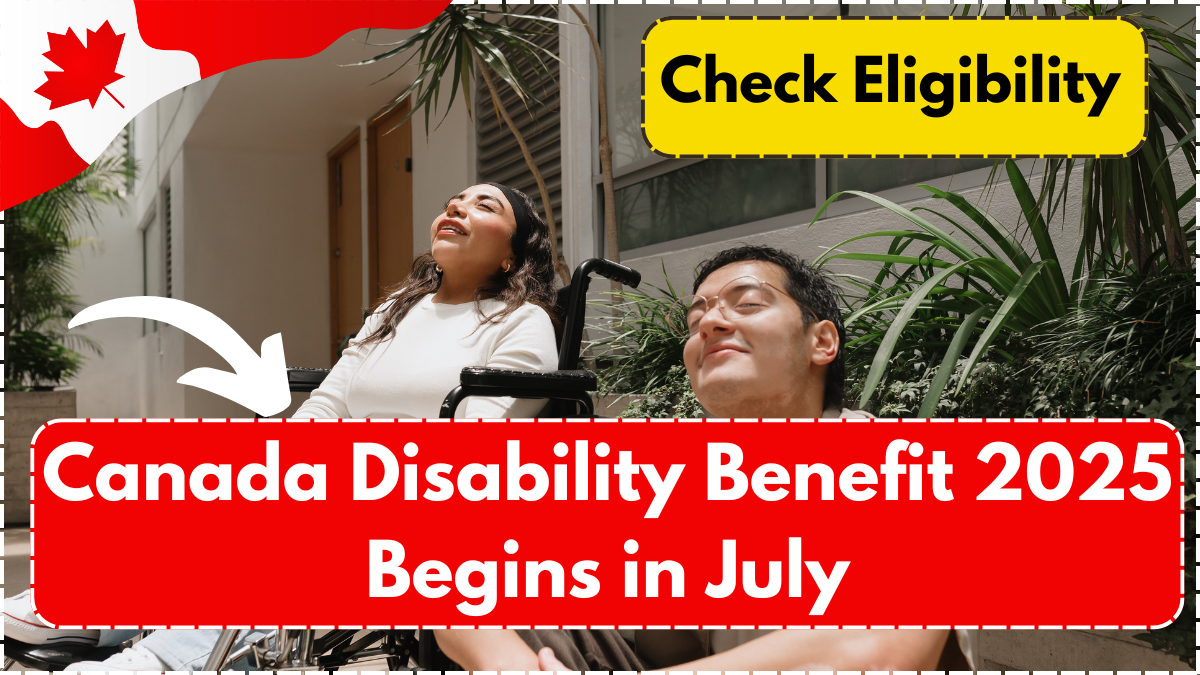The Canada Disability Benefit (CDB) is a groundbreaking federal initiative aimed at improving financial stability for Canadians with disabilities. Established under the Canada Disability Benefit Act (Bill C-22), which was passed in June 2023, this program provides monthly financial assistance to working-age individuals facing disability-related challenges. It is designed as a supplementary income program that enhances—but does not replace—existing provincial and territorial disability benefits. The primary goal of the CDB is to alleviate poverty and ensure long-term financial security for those who need it most.

Timeline of the Canada Disability Benefit Implementation
The federal government has provided a clear roadmap for the CDB rollout:
- June 2023 – The Canada Disability Benefit Act was officially passed into law.
- March 2025 – The government finalized key regulations regarding eligibility and payment structures.
- June 2025 – Applications for the CDB open. Individuals already receiving the Disability Tax Credit (DTC) will experience a streamlined application process.
- July 2025 – The first monthly payments are scheduled to be distributed to eligible recipients.
How Much Will the Canada Disability Benefit Pay?
While the exact amount may vary, the government has allocated approximately $1.4 billion per year for the program, with an estimated total budget of $6.1 billion over six years. The monthly benefit amount is expected to be up to $200 per person, depending on income level and other disability-related financial support they may receive.
Also Read: £935 DWP State Pension Increase Can Be Implemented from April 2025: Who Gets It?
Who Is Eligible for the Canada Disability Benefit?
To qualify for the CDB, applicants must meet the following criteria:
- Be between the ages of 18 and 64.
- Have an approved Disability Tax Credit (DTC).
- Be a resident of Canada.
- Have filed their income tax returns (including those of their spouse/common-law partner, if applicable).
How to Apply for the Canada Disability Benefit
The application process is designed to be simple and accessible, ensuring that all eligible individuals can easily apply.
- Online Applications: Applicants can apply using the Canada Revenue Agency’s (CRA) My Account portal.
- Paper Applications: A paper-based application will also be available for those who require it.
- Community Support: The government has committed to offering extensive outreach programs and assistance services to help applicants complete the process.
How the CDB Works with Provincial Disability Programs
The Canada Disability Benefit is meant to work alongside existing provincial and territorial support programs rather than replace them. The federal government has coordinated with provinces and territories to ensure that the CDB does not reduce or eliminate existing disability benefits. Several provinces have committed to preserving current supports, ensuring that recipients do not experience financial losses as a result of this new federal program.
Privacy Protections and Security Measures
To protect applicants, the government has implemented strong privacy and security measures throughout the CDB application and distribution process. These include:
- Transparent application guidelines to reduce confusion and ensure easy navigation.
- Data privacy safeguards to protect personal and financial information.
- Appeal and review mechanisms in case an application is denied or disputed.
How Advocacy Groups View the Canada Disability Benefit
Disability advocacy organizations have welcomed the CDB as a significant step forward in addressing financial inequality for disabled Canadians. However, many groups have called for:
- Greater clarity on payment amounts and eligibility criteria.
- Improved accessibility for the application process.
- Long-term funding commitments to ensure sustainability of the program.
Quick Overview of the Canada Disability Benefit
| Aspect | Details |
|---|---|
| Launch Date | July 2025 |
| Application Opens | June 2025 |
| Maximum Monthly Benefit | Up to $200 |
| Eligibility | Ages 18-64, DTC approval, Canadian resident, tax filing compliance |
| Application Methods | Online (CRA My Account), Paper Application, Community Support |
| Provincial Integration | Will not reduce existing provincial/territorial disability benefits |
| Security & Privacy | Data protection, transparent appeal system, accessibility-focused design |
| Advocacy Groups’ Feedback | Positive but requesting further details on payments & accessibility |
Final Thoughts
The Canada Disability Benefit represents a major milestone in supporting Canadians with disabilities. By reducing poverty and enhancing financial security, the CDB aims to create a more inclusive and equitable society. As the application period approaches, the government is expected to launch public awareness campaigns to ensure that all eligible individuals can access and benefit from this historic program.
Frequently Asked Questions (FAQs)
1. When will the Canada Disability Benefit be available?
The CDB will officially launch in July 2025, with applications opening in June 2025.
2. How much financial assistance will the CDB provide?
Eligible recipients can receive up to $200 per month, depending on their income and other disability-related benefits.
3. Who qualifies for the Canada Disability Benefit?
To be eligible, you must be 18-64 years old, a Canadian resident, and have an approved Disability Tax Credit (DTC). You must also have filed your income tax returns.
4. How do I apply for the Canada Disability Benefit?
You can apply online through the CRA’s My Account portal or submit a paper application. Government support and outreach programs will be available to assist applicants.
5. Will the CDB affect my provincial disability benefits?
No. The Canada Disability Benefit is designed to supplement, not replace, existing provincial and territorial disability support programs.
Click here to know more.
Akesh is a furniture expert with years of experience in design and craftsmanship. Specializing in sustainable materials, he shares his expertise to help people create stylish and functional living spaces.
